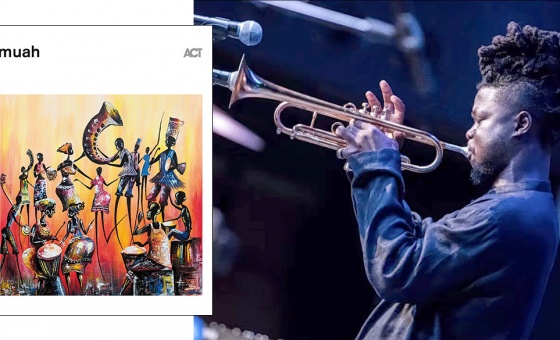This is the last article you can read this month
You can read more article this month
You can read more articles this month
Sorry your limit is up for this month
Reset on:
Please help support the Morning Star by subscribing here
THE CONNECTION between blues music and the African continent and how African slaves carried their music to the Americas has been well documented for almost a century, notably in Paul Oliver's groundbreaking book The Story of the Blues.
He traced the music created by slaves through “field hollers,” sung to back-breaking work in cotton fields and lumber camps, through to touring minstrel shows and onto the music we now know as the blues. DJ Charlie Gillett, broadcaster Andy Kershaw and Nick Gold at World Circuit Records in the 1990s also played a part in in bringing blues culture to a wider Western audience.
The 1990 release of Ali Farka Toure’s The River — followed by albums he made with US artists Taj Mahal and later Ry Cooder — established the affinity he and the Malian kora player Toumani Diabate had with the blues, notably with the music of John Lee Hooker and the musicians of the Mississippi hill country.
“Desert blues” became a catch-all phrase for the rhythms, scales and sounds of west Africa and former Led Zeppelin singer Robert Plant went looking for the roots of the blues in a 2003 documentary, which followed his travels to Mali to perform at the famous Festival in the Desert in Timbuktu alongside Ali Farka Toure, the group Tinariwen and many others.
Since then, there have been a number of excellent compilation albums featuring the music of Mali and west Africa and the new album Mali Blues in World Music Network’s Rough Guide To... series features the raw desert-blues sound that captivated Plant and other rock musicians who've been willing to explore new musical styles.
Situated in the heart of west Africa, Mali is one of the world's great musical treasures troves. The country has many musical styles and has attracted worldwide recognition but in 2012 the invasion of Islamic extremists who opposed all forms of secular music closed down recording studios and radio stations in northern Mali.
Now largely driven out of an area which is still regarded as dangerous, they smashed broadcasting and recording equipment, confiscated and destroyed records and tapes and drove music by such bands as Tinariwen underground.
On the album, guitarist Anansy Cisse, who was forced to dismantle his own studio, performs Gomni, a call for peace across Mali, while Samba Toure a protege of Ali Farka Toure, blends the sounds of River Niger blues, traditional Songhai themes and Malian music.
Ali Baba Cisse, from Niafunke, plays a laid-back guitar groove with traditional ngoni (lute), monochord and calabash (drum) and the band Alkibar Jr — from the same town — continue the legacy of their former teacher, Malian guitarist Afel Bocoum, and they carry on his musical legacy with their song La Paix.
Also on the album are the great Tuareg band Tartit, alongside lesser-known artists such as Sabu Doriente, who plays a heavily distorted and fuzzy guitar and Modiba Diabate, a wonderful kora player. His song Bonja implores rich Malians to invest their wealth back into the country, while if you think you have heard the riff Espoir De Niafunke play on La Paix au Nord du Mali you have – it’s Jimi Hendrix’s Voodoo Child.
And, yet another bonus, there are several previously unreleased tracks never previously heard outside of the country which contain some of the best-kept musical secrets from the spiritual homeland of the blues.








